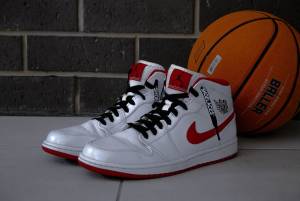
How to Develop a Strong Brand Identity for Your Business?
To help you create a powerful brand identity for your business, we asked founders, CEOs, and marketing professionals for their best advice. From personifying your brand to determining your unique value proposition, here are the top 10 tips shared by these experts on developing a strong brand identity.
- Personify Your Brand
- Choose a Searchable Name
- Cultivate an Internal Brand Culture
- Find a Name That Fits
- Invest in Consumer Research
- Create a Brand Style Guide
- Prioritize Your Audience
- Avoid Sending Mixed Messages
- Define Brand Values and Personality
- Determine Your Unique Value Proposition
Personify Your Brand
For creating a brand identity, one valuable tip I swear by is to personify your brand. It may sound silly, but asking questions like “How does my brand like its coffee?” can unveil important insights about how your brand would engage with your target audience.
By giving your brand a personality, you make it more relatable and approachable. This helps your customers connect with your brand and makes it easier for you to identify and resonate with your ideal audience. So, infuse your brand with a unique personality that leaves a lasting impression!
Choose a Searchable Name
Make sure your company name is searchable. Our company, Handwrytten, is a brand and is searchable thanks to its unique spelling. But if we were “Handwritten,” it would be much harder to find news postings, blogs, and other media that mention us.
David Wachs, Founder and CEO, Handwrytten
Cultivate an Internal Brand Culture
One fundamental step in creating a powerful brand identity is to build a unified internal brand culture. This involves cultivating an environment where all employees understand, embody, and advocate for your brand’s values and vision with passion.
Effective internal brand culture makes every team member a brand ambassador, leading to a consistent representation of your brand in every interaction, both internally and externally. This helps to ensure a consistent brand message and improves employee engagement and performance.
Kevin Hall, Marketing Operations, Webserv
Find a Name That Fits
Create a name that sets the tone for your company. Make sure it’s not prosaic or something snazzy for the sake of being snazzy. You’re not naming a garage band. You’re giving your company a name.
“We call ourselves Patriot Coolers because we sell top-brand coolers and drinkware for the outdoor enthusiast, but also because we donate proceeds of our sales to Homes for Our Troops.”
We donate to a nonprofit that provides housing for wounded military veterans. Patriot Coolers fit us like a glove. That’s what you should go after. Find a name that fits your brand like a glove.
Marcus Hutsen, Business Development Manager, Patriot Coolers
Invest in Consumer Research
Every brand wants to have a stronger brand identity. Still, few will invest money in order to find out where their current brand identity stands. Even fewer will invest in changes to their branding to determine the impact it will have on their future brand identity.
Every brand that cares about its company’s future should invest in consumer research to determine where it can improve its brand identity.
Jason Vaught, Director of Content, SmashBrand
Create a Brand Style Guide
A brand style guide is a document that takes the guesswork out of how your business should be portrayed within your marketing. It should include your core values, logo variants, logo usage guidelines, font system, color palette, photography treatment, iconography, patterns, textures, mockups of the branding in action, and social media templates.
When the brand identity elements within the style guide are created with a strategic approach, the business will attract its ideal clients with ease.
This guide helps to ensure that the business’s visuals and messaging will look consistent across its promotions. It’s an asset that can be distributed to team members for internal marketing initiatives and/or outside of the business for external project collaborations.
Megan Gersch, Owner and CEO
Prioritize Your Audience
Understand the audience you are targeting in great detail if you want to create an appealing brand identity. Understand their needs, goals, and discomforts. Make use of market research to help you create a memorable brand identity.
Different client groups might receive customized experiences thanks to segmentation. Visuals become a potent language when you carefully choose your fonts, colors, and artwork. The voice and tone of your brand must be genuine and consistent. Create a voice that matches the language and principles of your audience.
By putting your audience first, you can establish a connection that fosters loyalty and long-lasting bonds. Make a lasting impression on the hearts and minds of the people who matter most to your company.
Jay Kingman, Owner, Aniko Branding
Avoid Sending Mixed Messages
While developing a strong brand identity, avoid sending mixed messages to your customers. Clearly define what you want to convey and use language and visuals that resonate with your target audience. Just because something makes sense to you doesn’t mean it will be easily understood by your customers.
Resist the temptation to imitate your competitors. Even if they have successful branding, copying them won’t make your brand stand out. Instead, analyze their approach and add your own unique twist to differentiate yourself within your industry.
Maintain consistency between your online and offline presence. While there may be slight variations in your print materials and online platforms, ensure that your colors, typography, theme, and message remain consistent.
This helps build a cohesive and recognizable brand. Avoid blindly following trends that don’t align with your brand’s essence. Stay true to your brand’s original vision and iterate upon it.
Luke Cheetham, Founder, uRisk Legionella Testing
Define Brand Values and Personality
One tip for developing a solid brand identity for your business is clearly defining your brand’s values and personality.
Think about what your brand stands for, what sets it apart from competitors, and what kind of emotional response you want to elicit from customers. This can involve creating a mission statement, developing a brand voice and tone, and identifying key brand attributes you want to communicate through your marketing and messaging.
By clearly defining your brand’s values and personality, you can create a consistent and memorable brand identity that resonates with customers and helps differentiate your business in a crowded market.
Brad Cummins, Founder, Insurance Geek
Determine Your Unique Value Proposition
Developing a strong brand identity for your business requires careful consideration and planning. One crucial tip or step to take is to define your brand’s unique value proposition.
Defining a brand’s unique value proposition involves understanding and articulating its distinct benefits. You can do this by following these steps:
1) Identify the target audience and their needs.
2) Research competition to find gaps.
3) Determine the brand’s specific benefits.
4) Identify differentiators.
5) Craft a clear value proposition statement.
6) Ensure consistent communication across touchpoints.
7) Continuously refine based on feedback and goals. Align it with the brand mission, values, and positioning.
Published First on GRIT DAILY. Read Here.
Featured Image Credit: Photo by JD Danny; Pexels; Thank you!





